样式: 排序: IF: - GO 导出 标记为已读
-
From rice planting area mapping to rice agricultural system mapping: A holistic remote sensing framework for understanding China's complex rice systems ISPRS J. Photogramm. Remote Sens. (IF 10.6) Pub Date : 2025-04-19
Zizhang Zhao, Jinwei Dong, Jilin Yang, Luo Liu, Nanshan You, Xiangming Xiao, Geli ZhangInformation on the rice agricultural system, including not only planting area but also phenology and cropping intensity, is critical for advancing our understanding of food and water security, methane emissions, carbon and nitrogen cycles, and avian influenza transmission. However, existing efforts primarily focus on mapping planting area and lack a comprehensive picture of the rice agricultural system
-
A robust framework for mapping complex cropping patterns: The first national-scale 10 m map with 10 crops in China using Sentinel 1/2 images ISPRS J. Photogramm. Remote Sens. (IF 10.6) Pub Date : 2025-04-18
Bingwen Qiu, Fangzheng Wu, Xiang Hu, Peng Yang, Wenbin Wu, Jin Chen, Xuehong Chen, Liyin He, Berry Joe, Francesco N. Tubiello, Jianping Qian, Laigang WangComplex cropping patterns with crop diversity are an underexploited treasure for global food security. However, significant methodological and dataset gaps in fully characterizing cropland cultivated with multiple crops and rotation sequences hinder our ability to understand and promote sustainable agricultural systems. Existing crop mapping models are challenged by the deficiency of ground reference
-
New maps of mafic mineral abundances in global mare units on the Moon ISPRS J. Photogramm. Remote Sens. (IF 10.6) Pub Date : 2025-04-18
Yuzhen Wang, Haijun Cao, Jian Chen, Changqing Liu, Xuejin Lu, Chengxiang Yin, Xiaohui Fu, Le Qiao, Guang Zhang, Chengbao Liu, Peng Zhang, Zongcheng LingLunar surface mineralogy plays a crucial role in characterizing the distribution and abundance of silicate minerals, providing pivotal insights into the geological evolution of the Moon. Existing lunar mineral distribution maps are primarily derived from the calibration of Apollo and Luna sample datasets, which are predominantly older than 3.0 Ga. However, these maps lack critical constraints from
-
On the consistency and stability of vegetation biophysical variables retrievals from Landsat-8/9 and Sentinel-2 ISPRS J. Photogramm. Remote Sens. (IF 10.6) Pub Date : 2025-04-17
Najib Djamai, Richard Fernandes, Lixin Sun, Gang Hong, Luke A. Brown, Harry Morris, Jadu DashSystematic decametric resolution global mapping of vegetation biophysical variables, including fraction of absorbed photosynthetically active radiation (fAPAR), fraction of vegetation cover (fCOVER), and leaf area index (LAI), is required to support various activities, including climate adaptation, crop management, biodiversity monitoring, and ecosystem assessments. The Canada Centre for Remote Sensing
-
RoIPoly: Vectorized building outline extraction using vertex and logit embeddings ISPRS J. Photogramm. Remote Sens. (IF 10.6) Pub Date : 2025-04-17
Weiqin Jiao, Hao Cheng, George Vosselman, Claudio PerselloPolygonal building outlines are crucial for geographic and cartographic applications. The existing approaches for outline extraction from aerial or satellite imagery are typically decomposed into subtasks, e.g., building masking and vectorization, or treat this task as a sequence-to-sequence prediction of ordered vertices. The former lacks efficiency, and the latter often generates redundant vertices
-
MMFF: Multiview and multi-level feature fusion method within limited sample conditions for SAR image target recognition ISPRS J. Photogramm. Remote Sens. (IF 10.6) Pub Date : 2025-04-16
Benyuan Lv, Ying Luo, Jiacheng Ni, Siyuan Zhao, Jia Liang, Yingxi Liu, Qun ZhangThe fusion of SAR image features from multiple views can effectively improve the recognition performance of SAR ATR tasks. However, when the number of raw samples in SAR images is limited, multiple fusions of SAR image features from different views of the same class may result in significant feature redundancy, causing overfitting of the model. To solve those problems, we propose a multiview and multi-level
-
Reliable-loc: Robust sequential LiDAR global localization in large-scale street scenes based on verifiable cues ISPRS J. Photogramm. Remote Sens. (IF 10.6) Pub Date : 2025-04-13
Xianghong Zou, Jianping Li, Weitong Wu, Fuxun Liang, Bisheng Yang, Zhen DongWearable laser scanning (WLS) system has the advantages of flexibility and portability. It can be used for determining the user’s path within a prior map, which is a huge demand for applications in pedestrian navigation, collaborative mapping, augmented reality, and emergency rescue. However, existing LiDAR-based global localization methods suffer from insufficient robustness, especially in complex
-
DeepCropClustering: A deep unsupervised clustering approach by adopting nearest and farthest neighbors for crop mapping ISPRS J. Photogramm. Remote Sens. (IF 10.6) Pub Date : 2025-04-12
Hengbin Wang, Yuanyuan Zhao, Shaoming Li, Zhe Liu, Xiaodong ZhangExisting crop type maps usually rely on extensive ground truth, limiting the potential applicability in regions without any crop labels. Unsupervised clustering offers a promising approach for crop mapping in regions lacking labeled crop samples. However, due to the high-dimensional complexity and pronounced temporal dependencies of crop time series, existing unsupervised clustering methods are inadequate
-
Super-resolution supporting individual tree detection and canopy stratification using half-meter aerial data ISPRS J. Photogramm. Remote Sens. (IF 10.6) Pub Date : 2025-04-12
Zhu Mao, Omid Abdi, Jori Uusitalo, Ville Laamanen, Veli-Pekka KivinenIndividual Tree Detection (ITD) can automatically recognize single trees and generate large-scale individual tree maps, providing essential insights for tree-by-tree forest management. However, ITD using remote sensing data becomes increasingly challenging as data quality and spatial resolution decrease. This paper proposes a Super-Resolution (SR)-based ITD method to predict individual tree locations
-
TKSF-KAN: Transformer-enhanced oat yield modeling and transferability across major oat-producing regions in China using UAV multisource data ISPRS J. Photogramm. Remote Sens. (IF 10.6) Pub Date : 2025-04-12
Pengpeng Zhang, Bing Lu, Jiali Shang, Changwei Tan, Qihan Xu, Lei Shi, Shujian Jin, Xingyu Wang, Yunfei Jiang, Yadong Yang, Huadong Zang, Junyong Ge, Zhaohai ZengAccurate and efficient estimation of crop yield is crucial for enhancing crop variety testing, optimizing cultivation practices, and supporting effective crop management to ensure sustainable production. However, remote sensing-based yield models often face limitations due to geographical variability and diverse cultivation techniques, affecting both their model accuracy and transferability. This study
-
SfM on-the-fly: A robust near real-time SfM for spatiotemporally disordered high-resolution imagery from multiple agents ISPRS J. Photogramm. Remote Sens. (IF 10.6) Pub Date : 2025-04-12
Zongqian Zhan, Yifei Yu, Rui Xia, Wentian Gan, Hong Xie, Giulio Perda, Luca Morelli, Fabio Remondino, Xin WangIn the last twenty years, Structure from Motion (SfM) has been a constant research hotspot in the fields of photogrammetry, computer vision, robotics etc., whereas real-time performance has only recently emerged as a topic of growing interest. This work builds upon the original on-the-fly SfM (Zhan et al., 2024) and presents an updated version (v2) with three new advancements to get better SfM reconstruction
-
RSGPT: A remote sensing vision language model and benchmark ISPRS J. Photogramm. Remote Sens. (IF 10.6) Pub Date : 2025-04-12
Yuan Hu, Jianlong Yuan, Congcong Wen, Xiaonan Lu, Yu Liu, Xiang LiThe emergence of large-scale Large Language Models (LLMs), with GPT-4 as a prominent example, has significantly propelled the rapid advancement of Artificial General Intelligence (AGI) and sparked the revolution of Artificial Intelligence 2.0. In the realm of remote sensing, there is a growing interest in developing large vision language models (VLMs) specifically tailored for data analysis in this
-
Saliency supervised masked autoencoder pretrained salient location mining network for remote sensing image salient object detection ISPRS J. Photogramm. Remote Sens. (IF 10.6) Pub Date : 2025-04-12
Yuxiang Fu, Wei Fang, Victor S. ShengRemote sensing image salient object detection (RSI-SOD), as an emerging topic in computer vision, has significant applications across various sectors, such as urban planning, environmental monitoring and disaster management, etc. In recent years, RSI-SOD has seen significant advancements, largely due to advanced representation learning methods and better architectures, such as convolutional neural
-
Evaluating saliency scores in point clouds of natural environments by learning surface anomalies ISPRS J. Photogramm. Remote Sens. (IF 10.6) Pub Date : 2025-04-12
Reuma Arav, Dennis Wittich, Franz RottensteinerIn recent years, three-dimensional point clouds are used increasingly to document natural environments. Each dataset contains a diverse set of objects, at varying shapes and sizes, distributed throughout the data and intricately intertwined with the topography. Therefore, regions of interest are difficult to find and consequent analyses become a challenge. Inspired from visual perception principles
-
Infrared thermal dense point clouds: A new frontier for remote landslide investigation ISPRS J. Photogramm. Remote Sens. (IF 10.6) Pub Date : 2025-04-09
D. Caliò, M. Intelisano, G. Pappalardo, S. MineoA novel way of analysing IRT images of landslides using thermal dense point clouds is herein presented. The Infrared Thermo Point Cloud tool was specifically developed to adjust and homogenize the temperature range of input images prior to the realization of a dense point cloud through conventional algorithms. In this way, bias and errors arising from differences in the temperature ranges of overlapping
-
Self-attention and frequency-augmentation for unsupervised domain adaptation in satellite image-based time series classification ISPRS J. Photogramm. Remote Sens. (IF 10.6) Pub Date : 2025-04-09
David Gackstetter, Kang Yu, Marco KörnerWith the increasing availability of Earth observation data in recent years, the development of deep learning algorithms for the classification of satellite image time series (SITS) has substantially progressed. Yet, when encountering settings of lacking target labels and distinct feature variations, even the latest classification algorithms may perform poorly in transferring knowledge from a trained
-
GACraterNet: A collaborative geometry-attribute domain network for enhanced detection of Martian impact craters ISPRS J. Photogramm. Remote Sens. (IF 10.6) Pub Date : 2025-04-09
Fan Hu, Dong Chen, Jiaming Na, Zhen Cao, Zhenxin Zhang, Liqiang Zhang, Zhizhong KangAccurately understanding the local and global distribution, categories and morphological parameters of impact craters on Mars, including variations across the southern highlands, northern lowlands, equatorial region and polar zones, is crucial for revealing the geological history and environmental changes. To this end, this paper proposes a multi-task deep learning framework, GACraterNet(Geometric
-
Advancements in satellite-based methane point source monitoring: A systematic review ISPRS J. Photogramm. Remote Sens. (IF 10.6) Pub Date : 2025-04-09
Fariba Mohammadimanesh, Masoud Mahdianpari, Ali Radman, Daniel Varon, Mohammadali Hemati, Mohammad MarjaniMethane (CH4) stands out as the second-largest contributor to the global warming since pre-industrial era. Anthropogenic methane emissions (e.g., oil and gas, waste management, and coal mining) are the major sources of methane release and in the meantime provide an excellent opportunity for emission reduction. Regarding this, observations from satellite remote sensing paly pivotal role in methane detection
-
GAT-LSTM: A feature point management network with graph attention for feature-based visual SLAM in dynamic environments ISPRS J. Photogramm. Remote Sens. (IF 10.6) Pub Date : 2025-04-09
Xuan Wang, Yuan Zhuang, Xiaoxiang Cao, Jianzhu Huai, Zhenghua Zhang, Zhenqi Zheng, Naser El-SheimyVisual simultaneous localization and mapping (vSLAM) is crucial in various applications, ranging from robotics to augmented reality. However, dynamic environments cause difficulty to vSLAM, which often relies on extracted feature points (FPs). Effectively managing FPs in dynamic environments poses a significant challenge. To address this challenge, we propose an innovative solution that leverages a
-
Simultaneous planning of standpoints and routing for laser scanning of buildings with network redundancy ISPRS J. Photogramm. Remote Sens. (IF 10.6) Pub Date : 2025-04-05
Julius Knechtel, Youness Dehbi, Lasse Klingbeil, Jan-Henrik HaunertStop-and-go laser scanning is becoming increasingly prevalent in a variety of applications, e.g., the survey of the built environment. For this, a surveyor needs to select a set of standpoints as well as the route between them. This choice, however, has a high impact on both the economic efficiency of the respective survey as well as the completeness, accuracy, and subsequent registrability of the
-
Improving visual grounding in remote sensing images with adaptive modality guidance ISPRS J. Photogramm. Remote Sens. (IF 10.6) Pub Date : 2025-04-01
Shabnam Choudhury, Pratham Kurkure, Biplab BanerjeeThis study explores the visual grounding (VG) task using data from remote sensing sensors, focusing on grounding phrases or prompts. We achieve this by employing masked feature encoding to create enriched, target-specific, and semantically aware visual representations. We aim to develop an efficient grounding architecture that uses language expressions as prompts for aerial images. Despite significant
-
Efficient metric-resolution land cover mapping using open-access low resolution annotations with prototype learning and modified Segment Anything model ISPRS J. Photogramm. Remote Sens. (IF 10.6) Pub Date : 2025-03-30
W.Y. Shi, H.G. Sui, C.L. Zhang, N. Zhou, M.T. Zhou, J.X. Wang, Z.T. DuLarge-scale metric-resolution land cover mapping is crucial for a detailed understanding of large areas of the Earth surface, supporting fine-scale decision-making in sectors such as agriculture, forestry, and conservation. Despite advances in remote sensing technology, this type of mapping is often limited by a lack of high-quality manually labeled data. To address this issue, here we propose a novel
-
An nD-histogram technique for querying non-uniformly distributed point cloud data ISPRS J. Photogramm. Remote Sens. (IF 10.6) Pub Date : 2025-03-28
Haicheng Liu, Zhiwei Li, Peter van Oosterom, Martijn Meijers, Chuqi ZhangPoint cloud data contains abundant information besides XYZ, such as Level of Importance (LoI) and intensity. These non-spatial dimensions are also frequently used and queried. Therefore, developing an efficient nD solution for managing and querying point clouds is imperative. Previous researchers have developed PlainSFC that maps both nD points and queries into a one-dimensional Space Filling Curve
-
DiffSARShipInst: Diffusion model for ship instance segmentation from synthetic aperture radar imagery ISPRS J. Photogramm. Remote Sens. (IF 10.6) Pub Date : 2025-03-28
Xiaowo Xu, Xiaoling Zhang, Shunjun Wei, Jun Shi, Wensi Zhang, Tianwen Zhang, Xu Zhan, Yanqin Xu, Tianjiao ZengRecently, deep learning (DL) methods, particularly convolutional neural networks (CNNs)-based ones, have significantly advanced the development of synthetic aperture radar (SAR) ship instance segmentation. However, existing instance segmentation algorithms typically rely on preset candidate boxes, which are challenging to perfectly match to ships from a regression optimization perspective, limiting
-
Global patterns and determinants of year-to-year variations in surface urban heat islands ISPRS J. Photogramm. Remote Sens. (IF 10.6) Pub Date : 2025-03-27
Xuanqing Guo, Huilin Du, Wenfeng Zhan, Yingying Ji, Chenguang Wang, Chunli Wang, Shuang Ge, Shasha Wang, Jiufeng Li, Sida Jiang, Dazhong Wang, Zihan Liu, Yusen Chen, Jiarui LiInvestigations on year-to-year variations in surface urban heat island intensity (ΔIs, the change in urban heat island intensity between consecutive years) are crucial for capturing the dynamics of urban climates at mid-term scales. While the patterns and underlying drivers of Is have been extensively studied, their year-to-year variability remains poorly understood, especially across global cities
-
ICESat-2 bathymetry algorithms: A review of the current state-of-the-art and future outlook ISPRS J. Photogramm. Remote Sens. (IF 10.6) Pub Date : 2025-03-27
Jaehoon Jung, Christopher E. Parrish, Lori A. Magruder, Joan Herrmann, Suhong Yoo, Jeffrey S. PerryOver six years of on-orbit operations, the NASA Ice, Cloud and Land Elevation Satellite-2 (ICESat-2) has proven the value of space-based laser altimetry for monitoring the response of Earth’s surfaces to a changing climate with continuous elevation measurements. Although bathymetry is not an official science requirement for the mission, ICESat-2 has had a transformative impact on understanding nearshore
-
Towards building floor-level nighttime light exposure assessment using SDGSAT-1 GLI data ISPRS J. Photogramm. Remote Sens. (IF 10.6) Pub Date : 2025-03-26
Hailan Huang, Bin Wu, Yu Wang, Bailang Yu, Huabing Huang, Wuming ZhangThe profound impact of light pollution on both natural and human systems is well-recognized. Particularly, light pollution at the building scale is inextricably intertwined with human living and has garnered increasing attention in recent years. However, the coarse spatial resolution of nighttime light data, coupled with the inadequacy of existing methods, have precluded detailed investigation into
-
Editorial for special issue on “Innovations in SAR image analysis − From global mapping to high-resolution monitoring”☆ ISPRS J. Photogramm. Remote Sens. (IF 10.6) Pub Date : 2025-03-26
Michael Schmitt, Zhong Lu, Franz J. Meyer, Gilda Schirinzi, Florence Tupin -
Precise and efficient high-frequency trajectory estimation for LiDAR georeferencing ISPRS J. Photogramm. Remote Sens. (IF 10.6) Pub Date : 2025-03-26
Florian Pöppl, Andreas Ullrich, Gottfried Mandlburger, Norbert PfeiferLaser scanners mounted on moving platforms allow for efficient large-scale 3D mapping using light detection and ranging (LiDAR). Because the laser scanner is moving with respect to the earth, its trajectory (position and orientation over time) must be known in order to georeference the scanner measurements to an earth-fixed coordinate system. This is commonly realized through integration with satellite
-
Paved or unpaved? A deep learning derived road surface global dataset from mapillary street-view imagery ISPRS J. Photogramm. Remote Sens. (IF 10.6) Pub Date : 2025-03-26
Sukanya Randhawa, Eren Aygün, Guntaj Randhawa, Benjamin Herfort, Sven Lautenbach, Alexander ZipfRoad surface information is essential for applications in urban planning, disaster routing or logistics optimization and helps to address various Sustainable Development Goals (SDGS): especially SDGs 1 (No poverty), 3 (Good health and well-being), 8 (Decent work and economic growth), 9 (Industry, Innovation and Infrastructure), 11 (Sustainable cities and communities), 12 (Responsible consumption and
-
Hybrid depth-event pose estimation for online dense reconstruction in challenging conditions ISPRS J. Photogramm. Remote Sens. (IF 10.6) Pub Date : 2025-03-25
Guohua Gou, Xuanhao Wang, Yang Ye, Han Li, Hao Zhang, Weicheng Jiang, Mingting Zhou, Haigang SuiIn this paper, we present a novel dense SLAM system based on depth-event fusion, aiming to address the challenge of online dense reconstruction in challenging environments. To achieve robust camera tracking, we devise a hybrid depth-event pose estimation framework based on random optimization, which estimates all states jointly. Notably, we introduce an innovative 3D-2D edge alignment method based
-
HeteCD: Feature Consistency Alignment and difference mining for heterogeneous remote sensing image change detection ISPRS J. Photogramm. Remote Sens. (IF 10.6) Pub Date : 2025-03-22
Wei Jing, Haichen Bai, Binbin Song, Weiping Ni, Junzheng Wu, Qi WangOptical change detection is limited by imaging conditions, hindering real-time applications. Synthetic Aperture Radar (SAR) overcomes these limitations by penetrating clouds and being unaffected by lighting, enabling all-weather monitoring when combined with optical data. However, existing heterogeneous change detection datasets lack complexity, focusing on single-scene targets. To address this gap
-
Superpixel-aware credible dual-expert learning for land cover mapping using historical land cover product ISPRS J. Photogramm. Remote Sens. (IF 10.6) Pub Date : 2025-03-21
Yujia Chen, Guo Zhang, Hao Cui, Xue Li, Shasha Hou, Chunyang Zhu, Zhigang Xie, Deren LiOne of the key solutions to the challenge of collecting training labels for high-resolution remote sensing images is to leverage prior information from historical land cover products, which includes knowledge derived from both same- and low-resolution land cover products (relative to the targeted images). However, employing these products as training labels directly fails to yield encouraging results
-
3D semantic segmentation: Cluster-based sampling and proximity hashing for novel class discovery ISPRS J. Photogramm. Remote Sens. (IF 10.6) Pub Date : 2025-03-20
Jing Du, Linlin Xu, Lingfei Ma, Kyle Gao, John Zelek, Jonathan LiNovel Class Discovery (NCD) in 3D semantic segmentation is crucial for applications requiring the ability to learn and segment previously unknown classes in point cloud data, such as autonomous driving and urban planning. Traditional 3D semantic segmentation methods often build upon a fixed set of known classes, which restricts their ability to discover classes not covered in the original training
-
TRSP: Texture reconstruction algorithm driven by prior knowledge of ground object types ISPRS J. Photogramm. Remote Sens. (IF 10.6) Pub Date : 2025-03-19
Zhendong Liu, Liang Zhai, Jie Yin, Xiaoli Liu, Shilong Zhang, Dongyang Wang, Abbas Rajabifard, Yiqun ChenThe texture reconstruction algorithm uses multiview images and 3D geometric surface models as data sources to establish the mapping relationship and texture consistency constraints between 2D images and 3D geometric surfaces to produce a 3D surface model with color reality. The existing algorithms still have challenges in terms of texture quality when faced with dynamic scenes with complex outdoor
-
InSAR estimates of excess ground ice concentrations near the permafrost table ISPRS J. Photogramm. Remote Sens. (IF 10.6) Pub Date : 2025-03-19
S. Zwieback, G. Iwahana, Q. Chang, F. MeyerGround ice melt can reshape permafrost environments, with repercussions for Northern livelihoods and infrastructure. However, fine-scale permafrost ground ice products are lacking, limiting environmental change predictions. We propose an InSAR-based approach for estimating ground ice near the permafrost table in sparsely vegetated terrain underlain by continuous permafrost. The Bayesian inversion retrieves
-
Omni-Scene Infrared Vehicle Detection: An Efficient Selective Aggregation approach and a unified benchmark ISPRS J. Photogramm. Remote Sens. (IF 10.6) Pub Date : 2025-03-19
Nan Zhang, Borui Chai, Jiamin Song, Tian Tian, Pengfei Zhu, Jiayi Ma, Jinwen TianVehicle detection in infrared aerial imagery is essential for military and civilian applications due to its effectiveness in low-light and adverse scenarios. However, the low spectral and pixel resolution of long-wave infrared (LWIR) results in limited information compared to visible light, causing significant background interference. Moreover, varying thermal radiation from vehicle movement and environmental
-
Map-Assisted remote-sensing image compression at extremely low bitrates ISPRS J. Photogramm. Remote Sens. (IF 10.6) Pub Date : 2025-03-18
Yixuan Ye, Ce Wang, Wanjie Sun, Zhenzhong ChenRemote-sensing (RS) image compression at extremely low bitrates has always been a challenging task in practical scenarios like edge device storage and narrow bandwidth transmission. Generative models including VAEs and GANs have been explored to compress RS images into extremely low-bitrate streams. However, these generative models struggle to reconstruct visually plausible images due to the highly
-
SFA-Net: A SAM-guided focused attention network for multimodal remote sensing image matching ISPRS J. Photogramm. Remote Sens. (IF 10.6) Pub Date : 2025-03-18
Tian Gao, Chaozhen Lan, Wenjun Huang, Sheng WangThe robust and accurate matching of multimodal remote sensing images (MRSIs) is crucial for realizing the fusion of multisource remote sensing image information. Traditional matching methods fail to exhibit effective performance when confronted with significant nonlinear radiometric distortions (NRDs) and geometric differences in MRSIs. To address this critical issue, we propose a novel framework called
-
GOOD: Towards domain generalized oriented object detection ISPRS J. Photogramm. Remote Sens. (IF 10.6) Pub Date : 2025-03-18
Qi Bi, Beichen Zhou, Jingjun Yi, Wei Ji, Haolan Zhan, Gui-Song XiaOriented object detection has been rapidly developed in the past few years, but most of these methods assume the training and testing images are under the same statistical distribution, which is far from reality. In this paper, we propose the task of domain generalized oriented object detection, which intends to explore the generalization of oriented object detectors on arbitrary unseen target domains
-
Semantically-Aware Contrastive Learning for multispectral remote sensing images ISPRS J. Photogramm. Remote Sens. (IF 10.6) Pub Date : 2025-03-18
Leandro Stival, Ricardo da Silva Torres, Helio PedriniSatellites continuously capture vast amounts of data daily, including multispectral remote sensing images (MSRSI), which facilitate the analysis of planetary processes and changes. New machine-learning techniques are employed to develop models to identify regions with significant changes, predict land-use conditions, and segment areas of interest. However, these methods often require large volumes
-
Improving XCO2 retrieval under high aerosol loads with fused satellite aerosol Data: Advancing understanding of anthropogenic emissions ISPRS J. Photogramm. Remote Sens. (IF 10.6) Pub Date : 2025-03-15
Hao Zhu, Tianhai Cheng, Xingyu Li, Xiaotong Ye, Donghao Fan, Tao Tang, Haoran Tong, Lili ZhangSatellite measurements of the column-averaged dry air mole fraction of carbon dioxide (XCO2) have been successfully employed to quantify anthropogenic carbon emissions under clean atmospheric conditions. However, for some large anthropogenic sources such as megacities or coal-fired power plants, which are often accompanied by high aerosol loads, especially in developing countries, atmospheric XCO2
-
Potential of Sentinel-1 time-series data for monitoring the phenology of European temperate forests ISPRS J. Photogramm. Remote Sens. (IF 10.6) Pub Date : 2025-03-14
Michael SchlundTime series from optical sensors are frequently used to retrieve phenology information of forests. While SAR (synthetic aperture radar) sensors can potentially provide even denser time series than optical data, their potential to retrieve phenological information of forests is still underexplored. In addition, the backscatter information from SAR is frequently exploited in the same way (e.g., via dynamic
-
Satellite-Based energy balance for estimating actual sugarcane evapotranspiration in the Ethiopian Rift Valley ISPRS J. Photogramm. Remote Sens. (IF 10.6) Pub Date : 2025-03-13
Gezahegn W. Woldemariam, Berhan Gessesse Awoke, Raian Vargas MarettoSatellite-derived actual evapotranspiration (ETa) maps are essential for the development of innovative water management strategies. Over the past decades, multiple novel satellite remote sensing-based surface energy balance (SEB) ETa modeling tools have been widely used to account for field-scale crop water use and irrigation monitoring. However, their predictive capabilities for intensively irrigated
-
Multi-frequency tomographic SAR: A novel 3-D imaging configuration for limited acquisitions ISPRS J. Photogramm. Remote Sens. (IF 10.6) Pub Date : 2025-03-13
Jian Zhao, Zegang Ding, Zhen Wang, Tao Sun, Kaiwen Zhu, Yuhan Wang, Zehua Dong, Linghao Li, Han LiTomographic synthetic aperture radar (TomoSAR) technology, as an extension of interferometric SAR (InSAR), solves the layover problem and realizes three-dimensional (3-D) imaging. Now, it is an important research direction in the field of radar imaging. However, TomoSAR usually requires the SAR sensor to make enough acquisitions at different spatial locations to achieve high-quality 3-D imaging, which
-
Toward Automated and Comprehensive Walkability Audits with Street View Images: Leveraging Virtual Reality for Enhanced Semantic Segmentation ISPRS J. Photogramm. Remote Sens. (IF 10.6) Pub Date : 2025-03-13
Keundeok Park, Donghwan Ki, Sugie LeeStreet view images (SVIs) coupled with computer vision (CV) techniques have become powerful tools in the planning and related fields for measuring the built environment. However, this methodology is often challenging to be implemented due to challenges in capturing a comprehensive set of planning-relevant environmental attributes and ensuring adequate accuracy. The shortcomings arise primarily from
-
A novel cyanobacteria occurrence index derived from optical water types in a tropical lake ISPRS J. Photogramm. Remote Sens. (IF 10.6) Pub Date : 2025-03-12
Davide Lomeo, Stefan G.H. Simis, Xiaohan Liu, Nick Selmes, Mark A. Warren, Anne D. Jungblut, Emma J. TebbsCyanobacteria blooms are a threat to water quality of lakes and reservoirs worldwide, requiring scalable monitoring solutions. Existing approaches for remote sensing of cyanobacteria focus on quantifying (accessory) photosynthetic pigment to map surface accumulations. These approaches have proven challenging to validate against in situ observations, limiting uptake in water quality management. Optical
-
SAR altimeter 3-D localization with combined Delay Doppler Image and spatio-temporal echo similarity ISPRS J. Photogramm. Remote Sens. (IF 10.6) Pub Date : 2025-03-12
Yu Wei, Weibo Qin, Fengming HuThe Synthetic Aperture Radar (SAR) altimeter is an active sensor, which is widely used in satellite microwave remote sensing. It can be also used for geophysical localization by evaluating the similarity between the acquired terrain profile and the prior data. However, typical factors, such as the linear assumption of terrain, high variation of the ground elevation, and wide beam width will degrade
-
Automated registration of forest point clouds from terrestrial and drone platforms using structural features ISPRS J. Photogramm. Remote Sens. (IF 10.6) Pub Date : 2025-03-12
Yiliu Tan, Xin Xu, Hangkai You, Yupan Zhang, Di Wang, Yuichi Onda, Takashi Gomi, Xinwei Wang, Min ChenLight Detection and Ranging (LiDAR) technology has demonstrated significant effectiveness in forest remote sensing. Terrestrial Laser Scanning (TLS) and Drone Laser Scanning (DLS) systems reconstruct forest point clouds from distinct perspectives. However, a single-platform point cloud is insufficient for a comprehensive reconstruction of multi-layered forest structures. Therefore, registration of
-
Mobile robotic multi-view photometric stereo ISPRS J. Photogramm. Remote Sens. (IF 10.6) Pub Date : 2025-03-08
Suryansh KumarMulti-View Photometric Stereo (MVPS) is a popular method for fine-detailed 3D acquisition of an object from images. Despite its outstanding results on diverse material objects, a typical MVPS experimental setup requires a well-calibrated light source and a monocular camera installed on an immovable base. This restricts the use of MVPS on a movable platform, limiting us from taking MVPS benefits in
-
SDCluster: A clustering based self-supervised pre-training method for semantic segmentation of remote sensing images ISPRS J. Photogramm. Remote Sens. (IF 10.6) Pub Date : 2025-03-07
Hanwen Xu, Chenxiao Zhang, Peng Yue, Kaixuan WangReducing the reliance of remote sensing semantic segmentation models on labeled training data is essential for practical model deployment. Self-supervised pre-training methods, which learn representations from unlabeled data by designing pretext tasks, provide an approach to address this requirement. One inconvenience of the currently contrastive learning-based and masked image modeling-based self-supervised
-
FengYun-3 meteorological satellites’ microwave radiation Imagers enhance land surface temperature measurements across the diurnal cycle ISPRS J. Photogramm. Remote Sens. (IF 10.6) Pub Date : 2025-03-06
Yuyang Xiong, Tianjie Zhao, Haishen Lü, Zhiqing Peng, Jingyao Zheng, Yu Bai, Panpan Yao, Peng Guo, Peilin Song, Zushuai Wei, Ronghan Xu, Shengli Wu, Lixin Dong, Lin Chen, Na Xu, Xiuqing Hu, Peng Zhang, Letu Husi, Jiancheng ShiLand Surface Temperature (LST) is a vital meteorological variable for assessing hydrological, ecological, and climatological dynamics, as well as energy exchanges at the land–atmosphere interface. Accurate and frequent LST measurement is essential for meteorological satellites. However, existing retrieval algorithms often fail to capture the nuances of diurnal temperature variations. This study utilizes
-
Mitigation of tropospheric turbulent delays in InSAR time series by incorporating a stochastic process ISPRS J. Photogramm. Remote Sens. (IF 10.6) Pub Date : 2025-03-05
Hailu Chen, Yunzhong Shen, Lei Zhang, Hongyu Liang, Tengfei Feng, Xinyou SongTropospheric delays present a significant challenge to accurately mapping the Earth’s surface movements using interferometric synthetic aperture radar (InSAR). These delays are typically divided into stratified and turbulent components. While efforts have been made to address the stratified component, effectively mitigating turbulence remains an ongoing challenge. In response, this study proposes a
-
Time-Series models for ground subsidence and heave over permafrost in InSAR Processing: A comprehensive assessment and new improvement ISPRS J. Photogramm. Remote Sens. (IF 10.6) Pub Date : 2025-03-02
Chengyan Fan, Cuicui Mu, Lin Liu, Tingjun Zhang, Shichao Jia, Shengdi Wang, Wen Sun, Zhuoyi ZhaoInSAR is an effective tool for indirectly monitoring large-scale hydrological-thermal dynamics of the active layer and permafrost by detecting the surface deformation. However, the conventional time-series models of InSAR technology do not consider the distinctive and pronounced seasonal characteristics of deformation over permafrost. Although permafrost-tailored models have been developed, their performance
-
TACMT: Text-aware cross-modal transformer for visual grounding on high-resolution SAR images ISPRS J. Photogramm. Remote Sens. (IF 10.6) Pub Date : 2025-03-02
Tianyang Li, Chao Wang, Sirui Tian, Bo Zhang, Fan Wu, Yixian Tang, Hong ZhangThis paper introduces a novel task of visual grounding for high-resolution synthetic aperture radar images (SARVG). SARVG aims to identify the referred object in images through natural language instructions. While object detection on SAR images has been extensively investigated, identifying objects based on natural language remains under-explored. Due to the unique satellite view and side-look geometry
-
Bounding box versus point annotation: The impact on deep learning performance for animal detection in aerial images ISPRS J. Photogramm. Remote Sens. (IF 10.6) Pub Date : 2025-02-27
Zeyu Xu, Tiejun Wang, Andrew K. Skidmore, Richard Lamprey, Shadrack NgeneBounding box and point annotations are widely used in deep learning-based animal detection from remote sensing imagery, yet their impact on model performance and training efficiency remains insufficiently explored. This study systematically evaluates the influence of these two annotation methods using aerial survey datasets of African elephants and antelopes across three commonly employed deep learning
-
Photogrammetric system of non-central refractive camera based on two-view 3D reconstruction ISPRS J. Photogramm. Remote Sens. (IF 10.6) Pub Date : 2025-02-27
Zhen Wu, Mingshu Nan, Haidong Zhang, Junzhou Huo, Shangqi Chen, Guanyu Chen, Zhang ChengDue to the harsh construction environment of tunnels, the visual system must be fitted with a sphere cover of a certain thickness. The visual system with an optical sphere cover invalidates conventional measurement methods. Therefore, this paper provides a comprehensive visual measurement method using spherical glass refraction. First, the spherical glass refraction imaging is modeled using a geometry-driven
-
Enhancing LiDAR point cloud generation with BRDF-based appearance modelling ISPRS J. Photogramm. Remote Sens. (IF 10.6) Pub Date : 2025-02-27
Alfonso López, Carlos J. Ogayar, Rafael J. Segura, Juan C. Casas-RosaThis work presents an approach to generating LiDAR point clouds with empirical intensity data on a massively parallel scale. Our primary aim is to complement existing real-world LiDAR datasets by simulating a wide spectrum of attributes, ensuring our generated data can be directly compared to real point clouds. However, our emphasis lies in intensity data, which conventionally has been generated using
-
LuoJiaHOG: A hierarchy oriented geo-aware image caption dataset for remote sensing image–text retrieval ISPRS J. Photogramm. Remote Sens. (IF 10.6) Pub Date : 2025-02-27
Yuanxin Zhao, Mi Zhang, Bingnan Yang, Zhan Zhang, Jujia Kang, Jianya GongImage–text retrieval (ITR) is crucial for making informed decisions in various remote sensing (RS) applications, including urban development and disaster prevention. However, creating ITR datasets that combine vision and language modalities requires extensive geo-spatial sampling, diverse categories, and detailed descriptions. To address these needs, we introduce the LuojiaHOG dataset, which is geospatially
-
Modeling the satellite instrument visibility range for detecting underwater targets ISPRS J. Photogramm. Remote Sens. (IF 10.6) Pub Date : 2025-02-26
Jun Chen, Wenting Quan, Xianqiang He, Ming Xu, Caipin Li, Delu PanTo assess the ability of a satellite instrument to detect submerged targets, we constructed a semi-analytical relationship to link target reflectance and the contrast threshold of the satellite instrument to visibility ranges. Using numerical simulation, we found that the contrast threshold of the satellite instrument was equal to 50 % of the residual error contained in satellite Rrs data. We evaluated


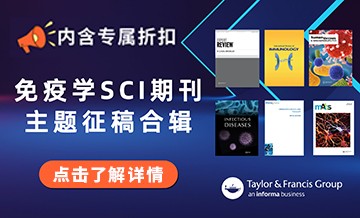

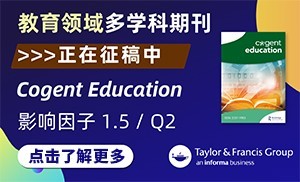
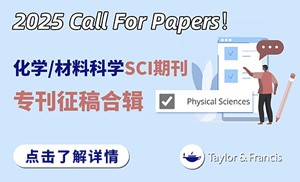
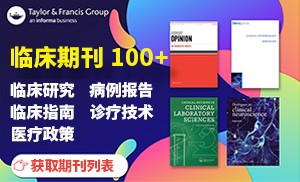



















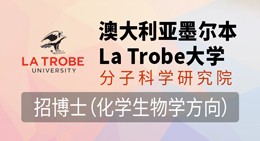












 京公网安备 11010802027423号
京公网安备 11010802027423号